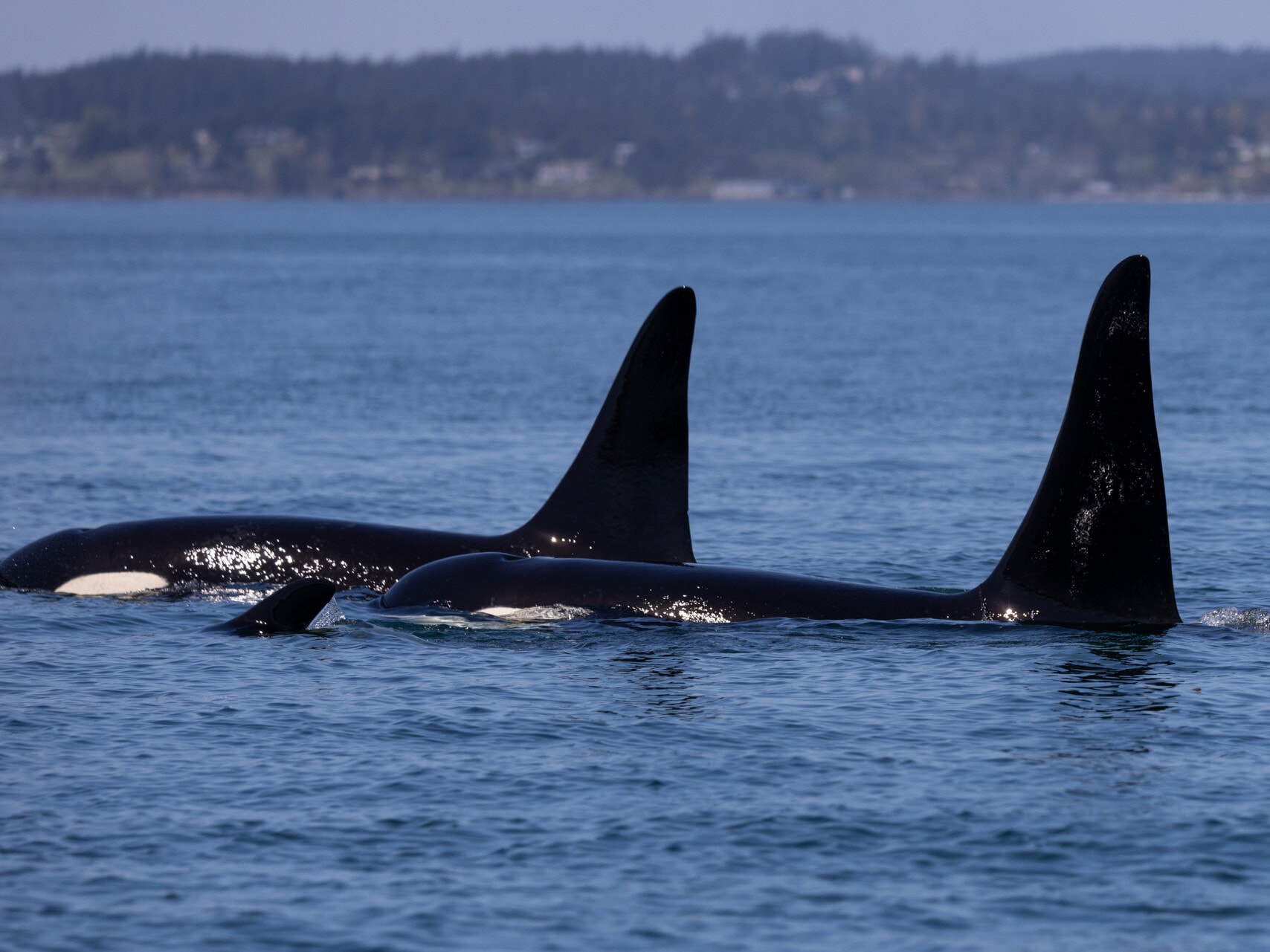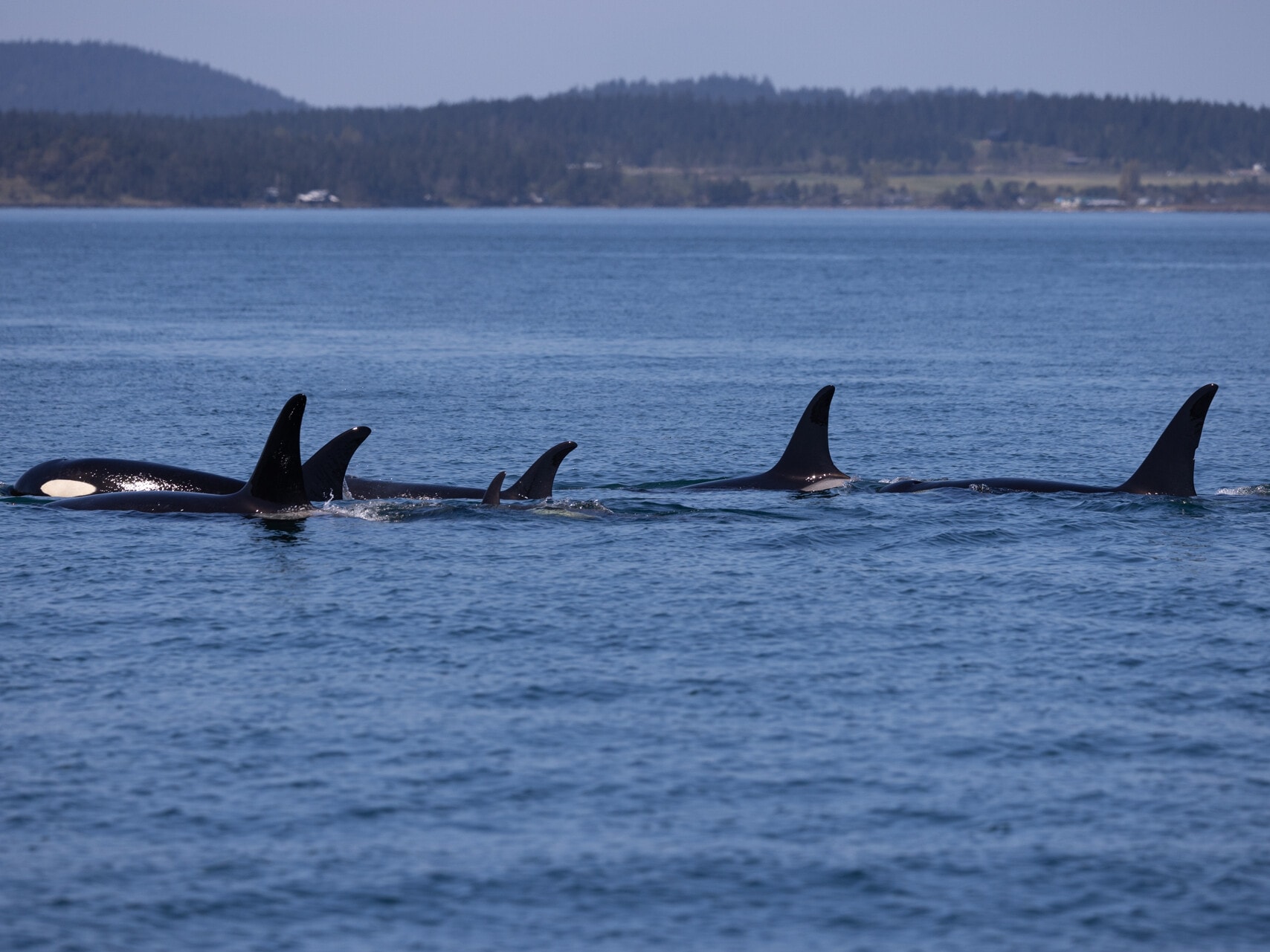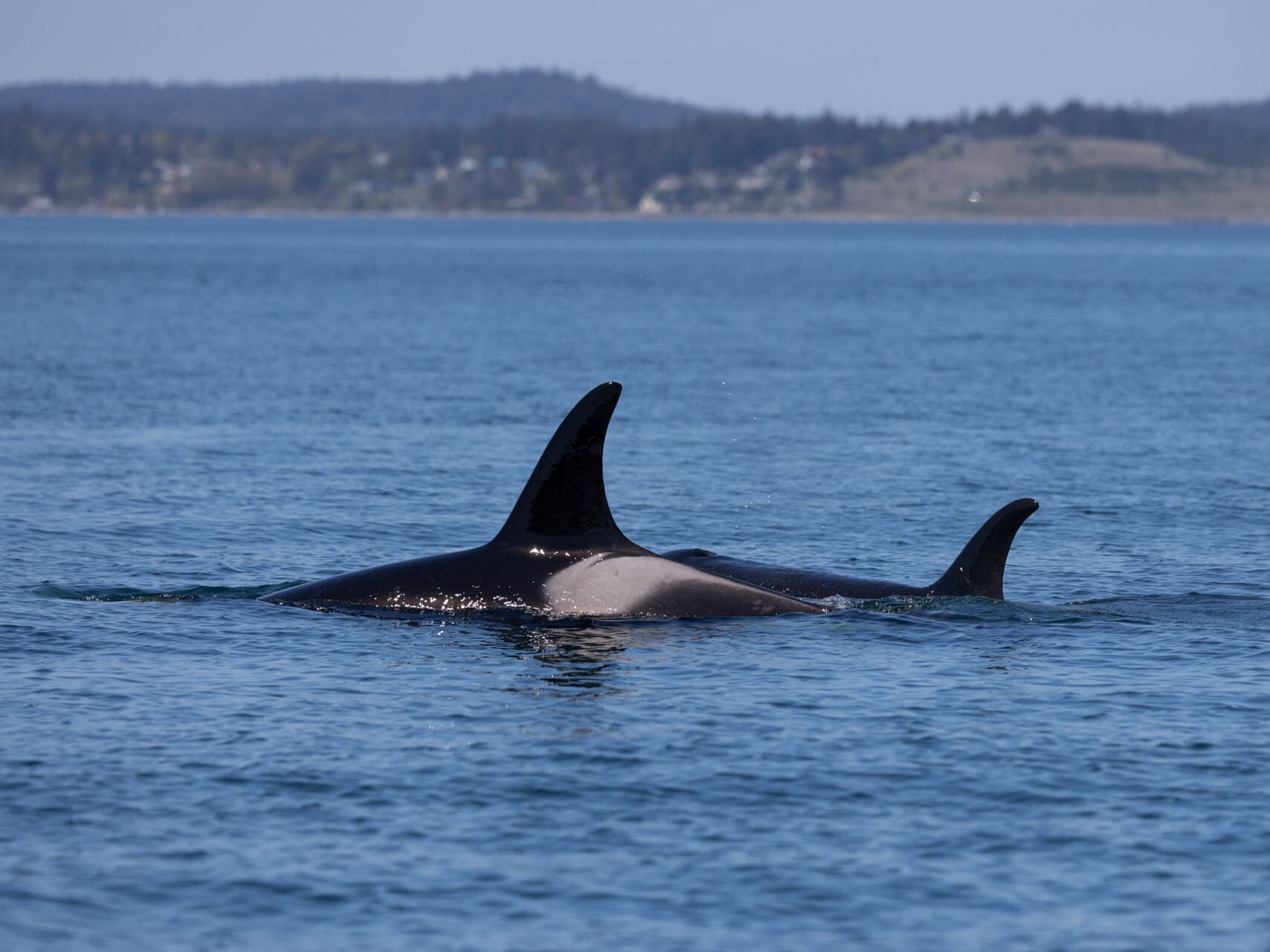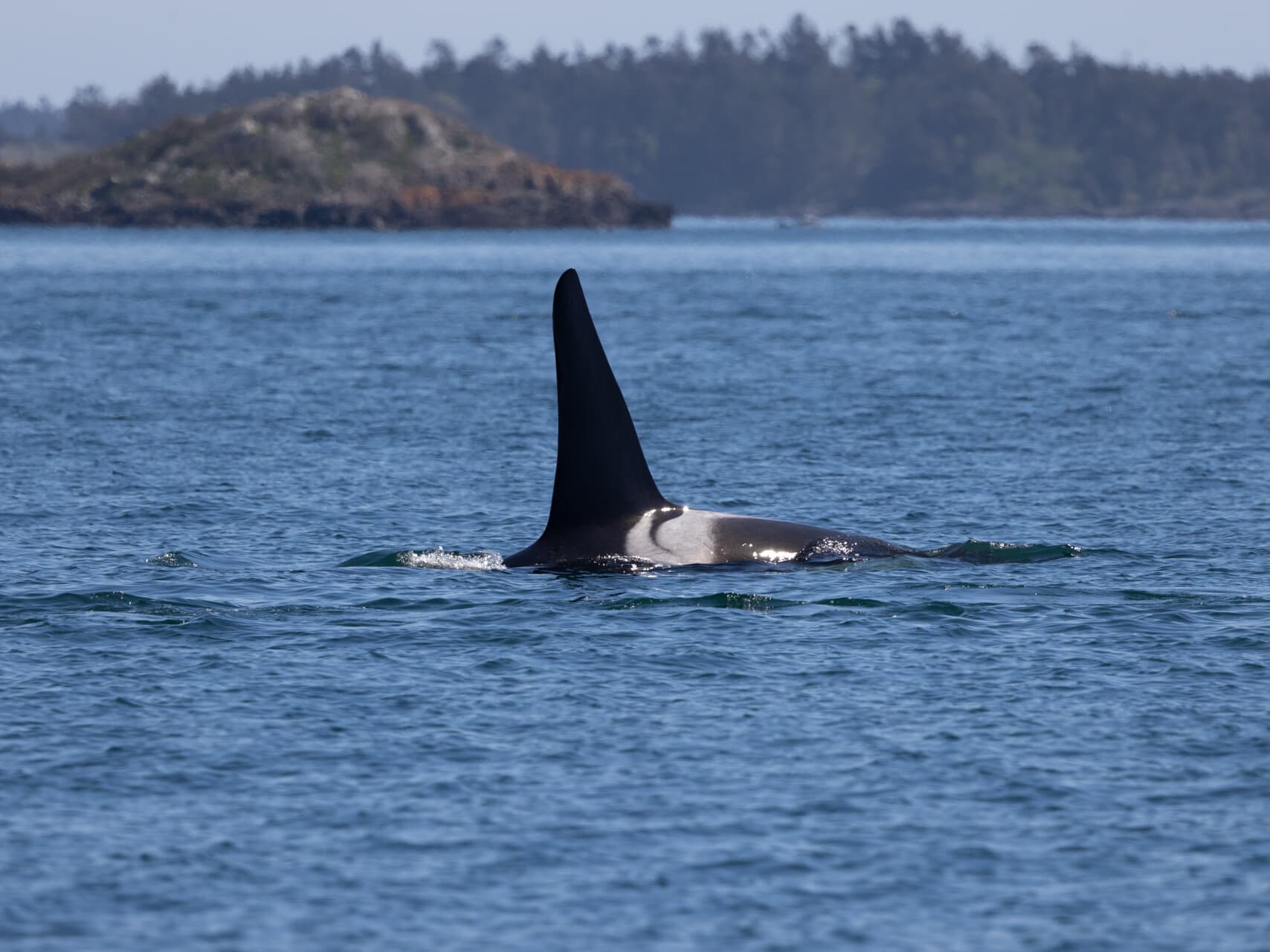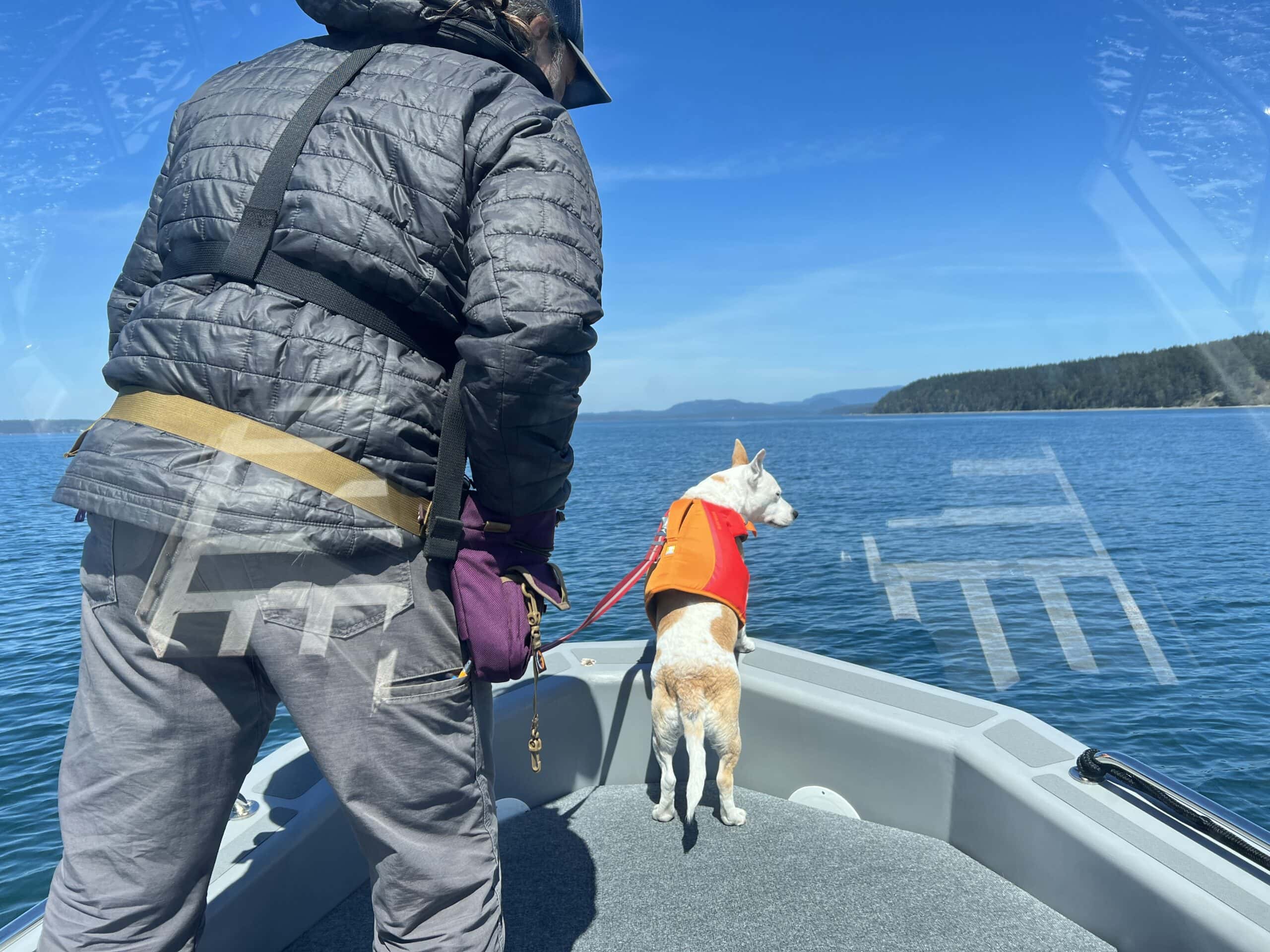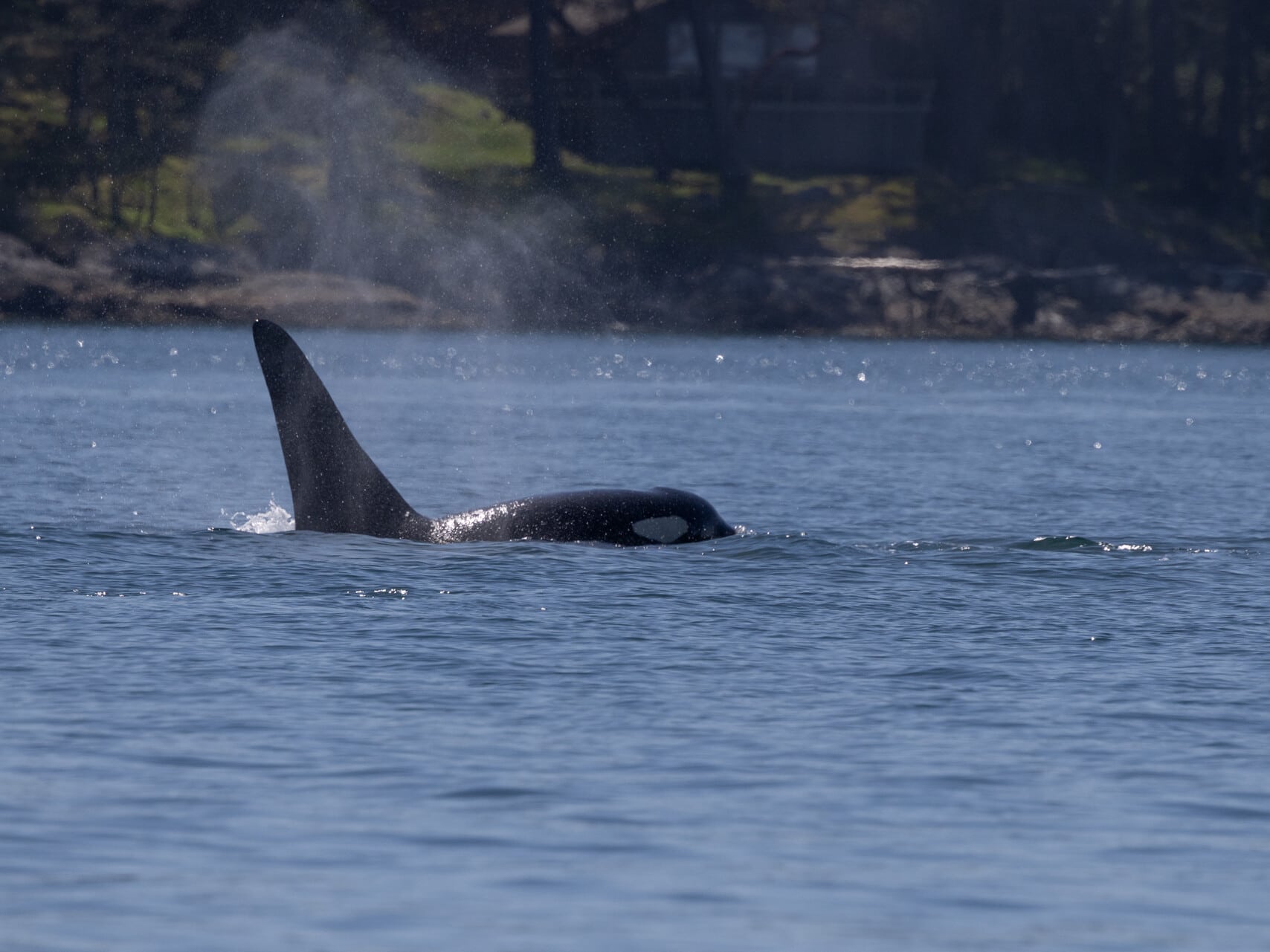After receiving confirmation that the orcas spotted in San Juan Channel were Southern Resident killer whales, the team headed to the boat at Snug Harbor. While preparing the boat for the day, we received a report that four J pod whales were off Eagle Point. We headed down the west side of San Juan Island, even though the water conditions were rough, at least a three on the Beaufort scale, making our travel down the island quite rough. Despite our constant scanning for whale dorsal fins, we did not encounter any whales before turning north into Cattle Pass.
As we traveled North into San Juan Channel, Dave Ellifrit from the Center for Whale Research radioed to tell us he was heading back south to try to locate the J16 matriline and J22 matriline as he had not yet encountered them. Shortly after arriving on scene, we encountered a large group of whales with significantly better water conditions; we positioned ourselves downwind and to the side of whales from the J11, J14, and J19 matrilines.
Overall, the group was slow traveling and occasionally socializing or engaged in “logging” behavior most of the time we were with them. However, if one phrase could be used to describe the whales’ behavior during our time with them, it would be LONG DIVE TIMES! The amount of time the whales were underwater is more often documented with Bigg’s (Transient) mammal-eating killer whales. Predicting where the whales will resurface when they are on such long dives is harder.
We continued to search for fecal samples when the whales turned South and headed out of Cattle Pass towards Salmon Bank, but as the water was even more choppy than it was earlier, we decided to head back to our home port by going “up and over” San Juan Island via the more sheltered water of San Juan Channel.
Research Vessel
R/V Cheena
Species
Southern Resident Killer Whales
Pods
J Pod
Research Activities
Fecal Collection, Behavior Data, Health Assessment



